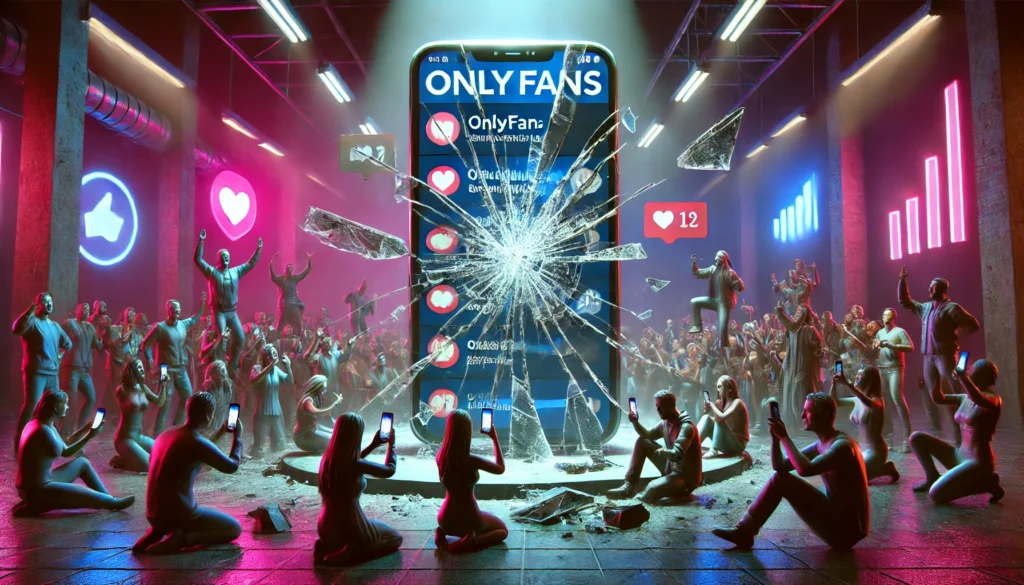Unmasking OnlyFans: The Hidden Costs on Society
In recent years, OnlyFans has risen as a prominent platform for monetising content, allowing creators to connect directly with their audience in exchange for subscription fees. While initially designed as a medium for exclusive content across various genres, it has become synonymous with adult entertainment. This shift has triggered widespread debate about its implications for individuals and society, exposing significant social, psychological, and moral challenges.
A New Face of Prostitution?
OnlyFans has redefined accessibility to adult content. Unlike traditional forms of sex work, it operates within the virtual realm, offering a sense of anonymity and detachment. However, its core function often mirrors that of prostitution—selling explicit content in exchange for money. The screen serves as a thin barrier, making this transactional relationship feel less taboo, but the moral and practical implications remain unchanged.
The platform’s growing influence has normalised hypersexualisation and objectification, drawing individuals from all walks of life, including teachers, corporate professionals, and even mechanics, into its ecosystem. Cases like that of Brianna Coppage, a Missouri high school teacher, highlight this phenomenon. Coppage resigned after being “outed” for her OnlyFans activity, which she justified as a way to supplement her low teaching salary of $42,000. Such stories are not isolated; they reflect a troubling trend where financial struggles push individuals toward a morally contentious solution.
The False Allure of Financial Freedom
One of the most compelling arguments for joining OnlyFans is its potential for financial gain. Creators often cite their ability to earn significantly more than traditional jobs. For example, Coppage claimed she made more in a month on OnlyFans than in her entire teaching career. However, this promise of wealth is not universal.
Research shows that a significant majority of creators earn between $50 and $160 monthly, far from the advertised success stories of high-profile influencers. This disparity creates a false sense of opportunity, luring individuals into a cycle of exploitation. Many creators face constant pressure to produce increasingly explicit content to retain subscribers, leading to mental health challenges, including anxiety, depression, and isolation.

The Societal Fallout
Hypersexualisation and Unrealistic Standards
The pervasive presence of platforms like OnlyFans has normalised hypersexualisation, especially among young people. Social media influencers and OnlyFans creators often project unattainable beauty standards, driven by cosmetic surgeries and extensive photo editing. These fabricated images set unrealistic expectations, not just for fans but also for aspiring creators, who feel compelled to alter their appearances to remain competitive.
Erosion of Professional Boundaries
The impact of OnlyFans extends beyond individual creators. Employers have increasingly been forced to address controversies surrounding employees’ involvement with such platforms. Teachers, for example, are expected to maintain a standard of professionalism that conflicts with the nature of OnlyFans content. The resulting scandals undermine trust in these professions and create distractions in workplaces.
Addiction and Dependency
For consumers, OnlyFans fosters a dangerous cycle of addiction. The concept of “novelty addiction” plays a significant role, as users constantly seek new and more explicit content to sustain their interest. This dependency not only leads to financial strain but also damages real-life relationships. Men, in particular, report dissatisfaction with partners who cannot match the hypersexualised personas they consume online.
The Mental Health Crisis
Creators and consumers alike face significant mental health risks. Creators often struggle with feelings of exploitation and the pressure to meet ever-growing demands from subscribers. Many report feelings of loneliness and isolation, as their perceived value becomes tied to their online persona. For consumers, the overconsumption of explicit content leads to desensitisation, making it difficult to form meaningful, intimate connections in real life.
A Call for Accountability
The growing influence of OnlyFans highlights the urgent need for societal introspection. While platforms like these promise financial independence and empowerment, their true cost often goes unspoken. They contribute to a culture of objectification, unrealistic expectations, and moral ambiguity.
Regulatory Measures
Governments should consider stricter regulations on internet-based sex work, ensuring that its accessibility does not come at the cost of societal well-being. Prostitution is illegal in many countries, yet platforms like OnlyFans operate with minimal oversight, exacerbating the problem.
Individual Responsibility
Consumers and creators must critically assess their participation in such platforms. For consumers, breaking free from the cycle of addiction starts with curating their digital environment, avoiding explicit content, and prioritising meaningful real-life connections. For creators, understanding the long-term consequences of this career path is crucial.
Conclusion
OnlyFans, often lauded as a revolutionary platform, comes with profound societal costs. It perpetuates hypersexualisation, exploits financial vulnerabilities, and erodes traditional moral values. As society continues to grapple with its influence, a collective effort to prioritise mental health, professional integrity, and meaningful connections is essential. The allure of quick money and validation should not overshadow the long-term harm it inflicts on individuals and communities alike.
By fostering awareness and encouraging accountability, we can mitigate the damaging effects of platforms like OnlyFans and strive for a healthier, more balanced society.




Post Comment